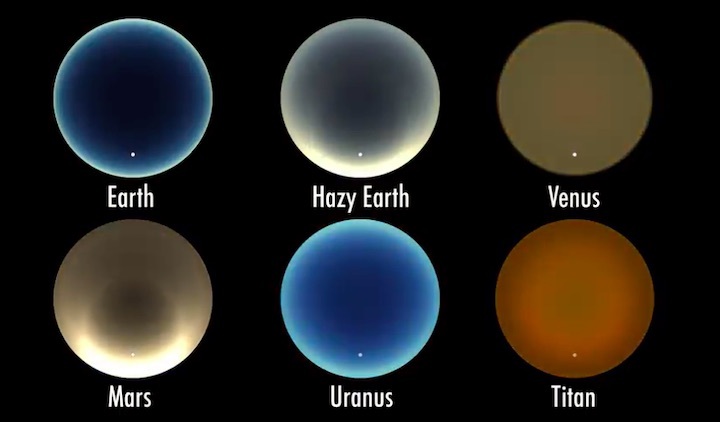29.06.2020

Have you ever wondered what a sunset on Uranus might look like?
As you can see in the animation above, a Uranian sunset is a rich azure that fades into royal blue with hints of turquoise. This blue-green color comes from the interaction of sunlight with the planet’s atmosphere. When sunlight — which is made up of all the colors of the rainbow — reaches Uranus’s atmosphere, hydrogen, helium and methane absorb the longer-wavelength red portion of the light. The shorter-wavelength blue and green portions of light get scattered as photons bounce off the gas molecules and other particles in the atmosphere. A similar phenomenon makes Earth’s sky appear blue on a clear day.
Geronimo Villanueva, a planetary scientist from NASA's Goddard Space Flight Center in Greenbelt, Maryland, created the sunset simulations while building a computer modeling tool for a possible future mission to Uranus, an icy-cold planet in the outer solar system. One day, a probe could descend through the Uranian atmosphere, with Villanueva’s tool helping scientists interpret the measurements of light that will reveal its chemical makeup.
To validate the accuracy of his tool, Villanueva simulated known sky colors of Uranus and other worlds, some of which are shown above. The animations show the Sun appearing to set from the perspective of someone on these worlds. As these worlds rotate away from the light of the Sun, which is what happens during a sunset, photons get scattered in different directions depending on the energy of the photons and the types of molecules in the atmospheres. The result is a lovely palette of colors that would be visible to those standing on these worlds.
The animations show all-sky views as if you were looking up at the sky through a super wide camera lens from Earth, Venus, Mars, Uranus, and Titan. The white dot represents the location of the Sun. The halo of light seen towards the end of the sunset on hazy Earth is produced because of the way light is scattered by particles, including dust or fog, that are suspended in the clouds. The same is true of the Martian halo. Also on Mars, the sunset turns from a brownish color to a blueish because the Martian dust particles scatter the blue color more effectively.
These sky simulations are now a new feature of a widely used online tool called the Planetary Spectrum Generator, which was developed by Villanueva and his colleagues at NASA Goddard. The generator helps scientists replicate how light is transferred through the atmospheres of planets, exoplanets, moons, and comets in order to understand what their atmospheres and surfaces are made of.
For a less technical and more contemplative perspective on alien sunsets, check out this short movie:
A video showing simulated sunsets from worlds across the solar systen and beyond.
Credits: Geronimo Villanueva/James Tralie/NASA's Goddard Space Flight Center
Quelle: NASA
